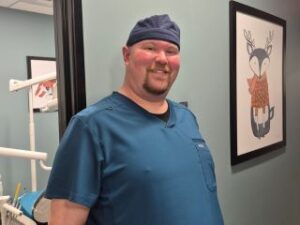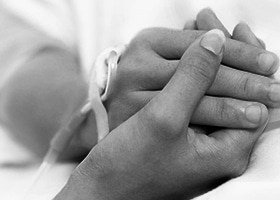If you’ve been ill with anything more than the common cold in your lifetime, chances are you’ve been prescribed or told to take an antibiotic. From bronchitis to a staphylococcus, if it’s an infection, antibiotics can likely be used to treat it. But almost nothing is full proof when it comes to medicine. We’ve broken it down for you by exploring the good, the bad, and the ugly sides to antibiotics.  So what do antibiotics do, exactly? Three things, primarily: They break down bacterial infections, which is when the bad kind of bacteria reproduce and emit harmful chemicals that cause tissue damage. They also work against fungal infections like mold, which gets into the air and goes into your lungs. Finally, they work against certain parasites, or organisms that have taken on a life inside of you. Many people are prescribed antibiotics for various reasons at any given time. But the problem with antibiotics is that the more we take them, the more likely we are to develop an antibiotic-resistant bacterial infection. One case study showed that out of 80,000 cases of MRSA (Methicillin-resistant Staphylococcus aureus), 11,000 people died of the infection. What’s even worse is that those are just from a particular case study. A larger census shows that more than 23,000 Americans each year die from various types of antibiotic-resistant bacteria. And on top of that, approximately half the time, people are prescribed antibiotics when they don’t really need them. You’ve probably heard about antibiotics in our meat. The majority of the antibiotics that are purchased each year are used in animal feed. We do this because it is said to help the animals grow faster and, when treated properly, antibiotics will fight off existing infections, and prevent new ones. But both the Center for Disease Control and the Food and Drug Administration feel that this is far too much treatment for the meat, and for us, and have advised farmers to phase out its usage. If the animals are consuming a lot of antibiotics, they too will then be more likely to develop antibiotic-resistant bacteria, which can then be transferred to us through consumption. Furthermore, the improper preparation of meat is very dangerous, and a 2013 outbreak of Salmonella caused the hospitalization of more than 150 people from one farm’s livestock. So if we didn’t have antibiotics, what would happen? One case study conducted in Germany showed that when animals were taken off of food that contained antibiotics, their feces contained less harmful bacteria than before. However, another study found that when more animals were getting sick, more human were also getting sick, and antibiotics might have helped to curb this. When all is said and done, antibiotics have prevented many, many deaths. Before antibiotics were introduced, 9 out of 10 children with bacterial meningitis died from the illness. And after we began using them? These days, only 1 in 10 will die from the bacterial infection. Those numbers speak for themselves. This educational graphic on antibiotics was development by Carrington’s pharmacy technician training program. Learn more about pharmacy technology and other health care career training programs by contacting us.
So what do antibiotics do, exactly? Three things, primarily: They break down bacterial infections, which is when the bad kind of bacteria reproduce and emit harmful chemicals that cause tissue damage. They also work against fungal infections like mold, which gets into the air and goes into your lungs. Finally, they work against certain parasites, or organisms that have taken on a life inside of you. Many people are prescribed antibiotics for various reasons at any given time. But the problem with antibiotics is that the more we take them, the more likely we are to develop an antibiotic-resistant bacterial infection. One case study showed that out of 80,000 cases of MRSA (Methicillin-resistant Staphylococcus aureus), 11,000 people died of the infection. What’s even worse is that those are just from a particular case study. A larger census shows that more than 23,000 Americans each year die from various types of antibiotic-resistant bacteria. And on top of that, approximately half the time, people are prescribed antibiotics when they don’t really need them. You’ve probably heard about antibiotics in our meat. The majority of the antibiotics that are purchased each year are used in animal feed. We do this because it is said to help the animals grow faster and, when treated properly, antibiotics will fight off existing infections, and prevent new ones. But both the Center for Disease Control and the Food and Drug Administration feel that this is far too much treatment for the meat, and for us, and have advised farmers to phase out its usage. If the animals are consuming a lot of antibiotics, they too will then be more likely to develop antibiotic-resistant bacteria, which can then be transferred to us through consumption. Furthermore, the improper preparation of meat is very dangerous, and a 2013 outbreak of Salmonella caused the hospitalization of more than 150 people from one farm’s livestock. So if we didn’t have antibiotics, what would happen? One case study conducted in Germany showed that when animals were taken off of food that contained antibiotics, their feces contained less harmful bacteria than before. However, another study found that when more animals were getting sick, more human were also getting sick, and antibiotics might have helped to curb this. When all is said and done, antibiotics have prevented many, many deaths. Before antibiotics were introduced, 9 out of 10 children with bacterial meningitis died from the illness. And after we began using them? These days, only 1 in 10 will die from the bacterial infection. Those numbers speak for themselves. This educational graphic on antibiotics was development by Carrington’s pharmacy technician training program. Learn more about pharmacy technology and other health care career training programs by contacting us.



